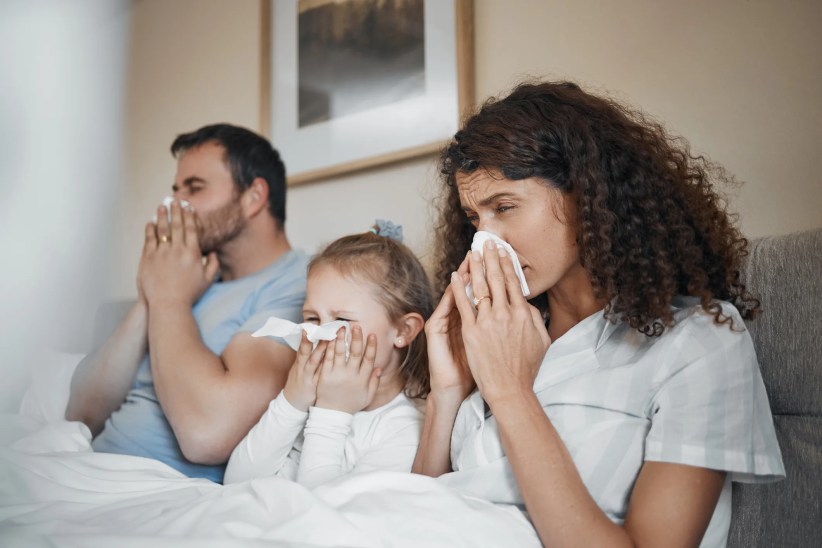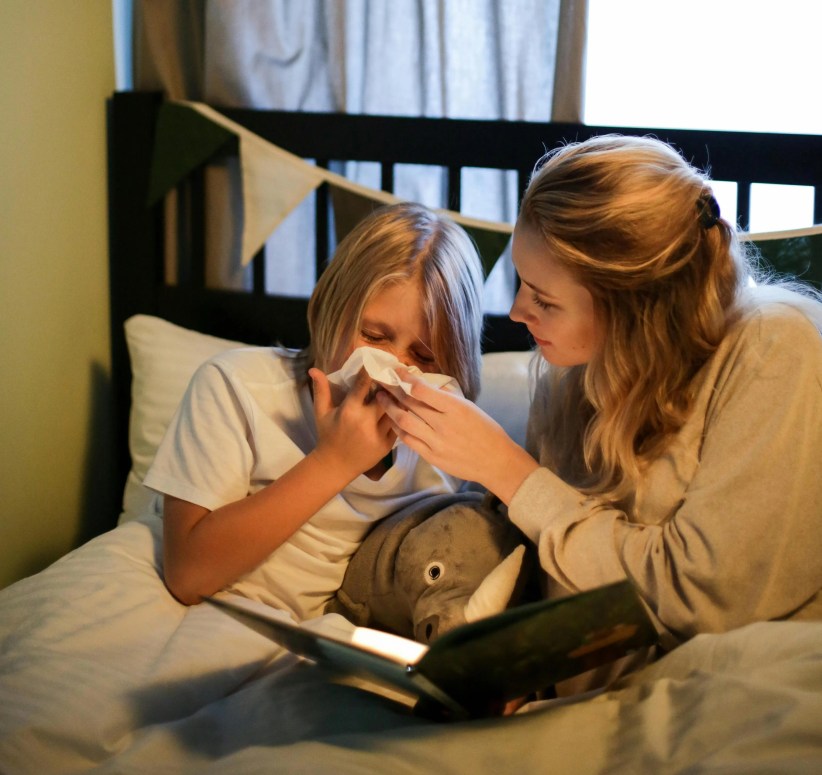In the past several years, it seems like kids have grown addicted to their phones, tablets, and laptops, all of which emit blue light. They’re constantly texting, streaming shows and movies, and using their phones way past their bedtimes. All of this blue light exposure can be concerning for parents who have heard conflicting information about the potential negative effects of blue light, such as sleep loss and weight gain. Two ophthalmologists share what may or may not be true about blue light—and how you can protect your kids from overexposure.
Potential Consequences of Blue Light
Blue light is a shorter wavelength on the spectrum of visible colors (red is the longest). Some science has shown that shorter wavelengths can have more damaging effects on the eyes. While blue light has been a hot topic for decades, cellphones, tablets, and other technology have exposed people to more blue light than ever before. The scientific community is back to discussing its potential hazards.
Tony T. Choi, MD, an ophthalmologist at Crystal Run Healthcare in West Nyack, says eyestrain as a result of overexposure to blue light-filled phone and computer screens is something he deals with regularly in patients. Symptoms of eyestrain include
- Blurred vision
- Headache
- A sore neck, shoulders, or back
- Difficulty concerned
- Increased sensitivity to light
Beyond eyestrain, blue light disrupts circadian rhythms and leads to a lack of sleep, which can contribute to weight gain and other negative side effects. Sleep loss can be particularly harmful for kids.
“We know that science has backed the importance of proper sleep hygiene in proper development in kids,” Dr. Choi says.
Dr. Choi and John Chang, MD, MPH, a board-certified ophthalmologist at the Spinak Medical Eye Center in Pearl River and Stony Point, agree that research has not provided conclusive evidence that blue light can contribute to mental health issues like depression.
Dr. Choi, who also has fellowship training in glaucoma, has seen an increase in pathologic myopia (excessive nearsightedness) in kids who aren’t getting enough sunlight. This might be because they’re inside, on their devices, he says.
“[With pathologic myopia kids are] extremely nearsighted, and so it requires a very thick prescription for glasses or contact lenses,” Dr. Choi says. “And pathologic myopia puts eyes at risk for retinal detachment and other kinds of eye conditions. A detached retina can lead to irreversible blindness.”
Is Blue Light Helpful or Harmful? Information is Conflicting
“It’s hard to say that blue light causes a change in the structures of the eye that we can measurably see,” Dr. Chang says. “I’ve seen in my experience so far blue light has positive and negative aspects.” The key variable might be timing. Blue light is necessary to keep our circadian rhythms working properly during the day, he says. It turns harmful once the sun sets and kids should be winding down. Blue light acts as eye stimulation when eyes are no longer looking to be stimulated.
While some say blue light is inherently bad, Dr. Chang points out that one color of light contains a spectrum of wavelengths. Shorter blue light waves—such as the light waves coming from the sun, theoretically the most harmful of the harmful—can cause damage, but longer blue light waves have less potential to do so. Our phones and computers emit “longer, potentially safer” waves.
However, Dr. Chang says researchers and doctors still don’t know the true nature of blue light.
“When they’ve done studies on blue light, it’s exposure in a very acute kind of setting. They’re taking animals and exposing them to large doses in a short period of time,” he says. “And one thing that we just don’t know is…what happens when someone has been looking at blue light for a long time, even if it’s that ‘safer’ blue light. What happens when they’ve been exposed to that for 20 years? Or 30 years? We just don’t know.”
How You Can Protect Your Kids
You may have seen advertisements for glasses or contacts that filter blue light as an easy preventative measure. According to Dr. Choi, there’s not enough evidence that these types of lenses are helpful for him to endorse them. “The key is to emphasize and stress limiting screen time, and if you’re utilizing the screen that you try to implement regular breaks,” he says.
He advocates for using the 20-20-20 rule. If you’ve been looking at a screen for 20 minutes, take a 20-second break and look at something at least 20 feet away. This will lessen the effects of eyestrain and give your eyes a break, and might be a good option for school-aged children with computers or those who are just hooked on their devices.
Dr. Chang doesn’t advocate for the 20-20-20 rule necessarily, but he says agrees breaks are crucial to protecting your eyes. Kids and parents should take breaks from the screen every 20-30 minutes.
For Dr. Choi, raising awareness of the potential negative effects of blue light is very important. Because it’s still relatively new, parents might not be aware of how excessive screen time could affect their kids down the road.






















